Understanding the Intersection of Autism and Disordered Eating Behaviors
Autism Spectrum Disorder (ASD) often co-occurs with various feeding and eating disorders, presenting unique clinical challenges and necessitating tailored treatment strategies. This article explores the intricate relationship between autism and eating disturbances, examining characteristic symptoms, underlying mechanisms, and effective support resources.
Characteristics of Feeding and Eating Disorders in Autistic Individuals
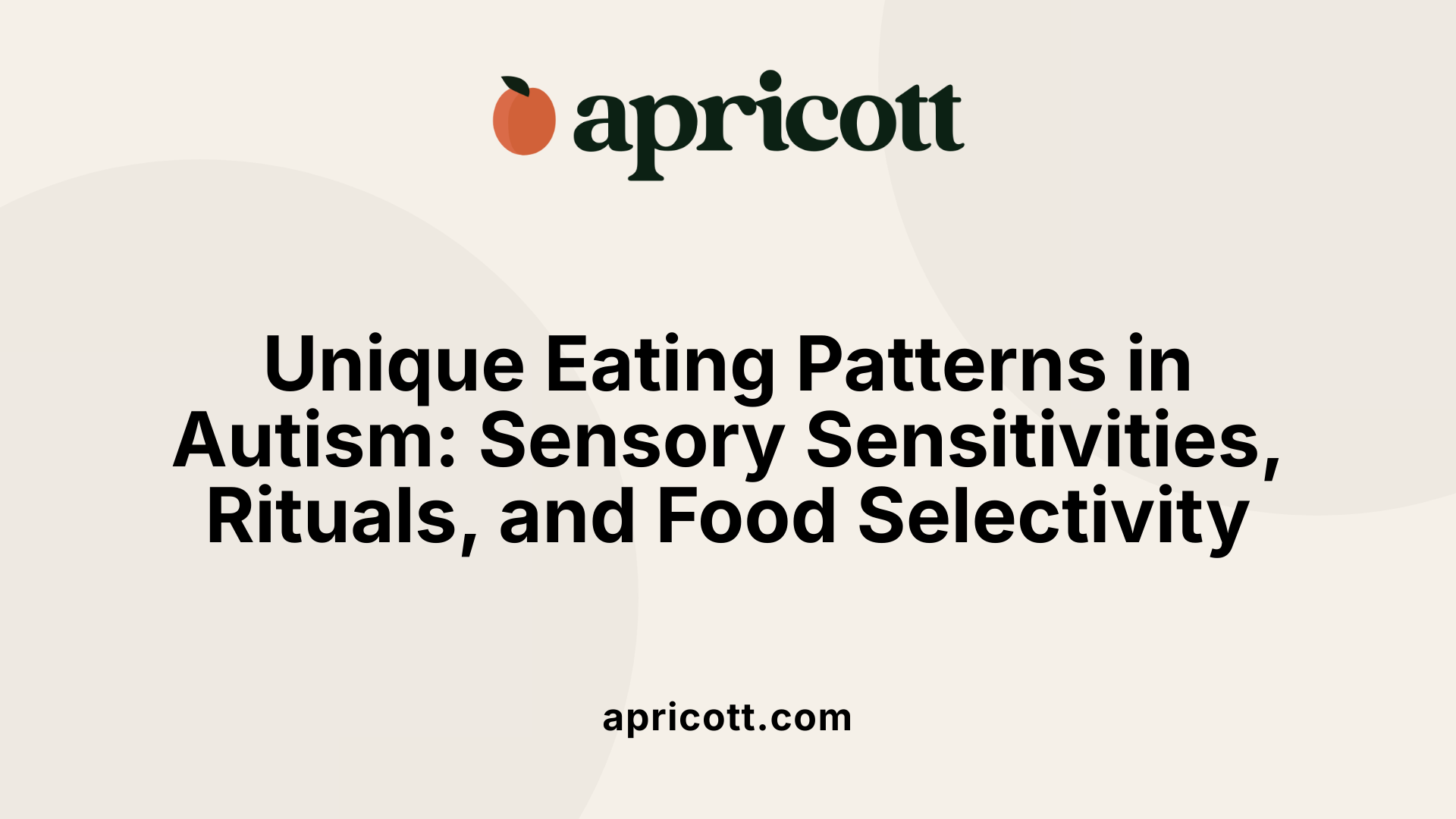
What are the common feeding and eating disorder characteristics observed in autistic individuals?
Autistic individuals often display unique eating patterns that differ from typical development. These include selective eating and food avoidance, where they may insist on certain foods and reject many others, often because of sensory sensitivities. For example, they might be sensitive to textures, tastes, or temperatures, which can severely limit their food variety.
Ritualistic eating behaviors and strict routines around meals are also common. This can involve specific ways of preparing or presenting food or following rigid eating schedules. These behaviors provide a sense of control and predictability in their environment.
Research shows that autistic people are at a higher risk for disorders like anorexia nervosa and ARFID (Avoidant/Restrictive Food Intake Disorder). In these cases, eating difficulties are often driven by sensory issues rather than concerns about body image. For instance, a person might restrict food intake because of adverse reactions to textures or smells, not because they want to lose weight.
Disordered eating behaviors, such as preoccupations with calorie counting or food rules, are also observed in autistic individuals. Emotional regulation difficulties and social challenges can further complicate their eating behaviors.
When combined, these characteristics can make diagnosis and treatment complex. Autistic traits such as sensory sensitivities, routines, and obsessive behaviors often influence eating disorders, making tailored approaches essential. Overall, understanding these features helps improve support strategies and health outcomes for autistic individuals with feeding and eating problems.
Exploring the Relationship Between Autism and Eating Disorders
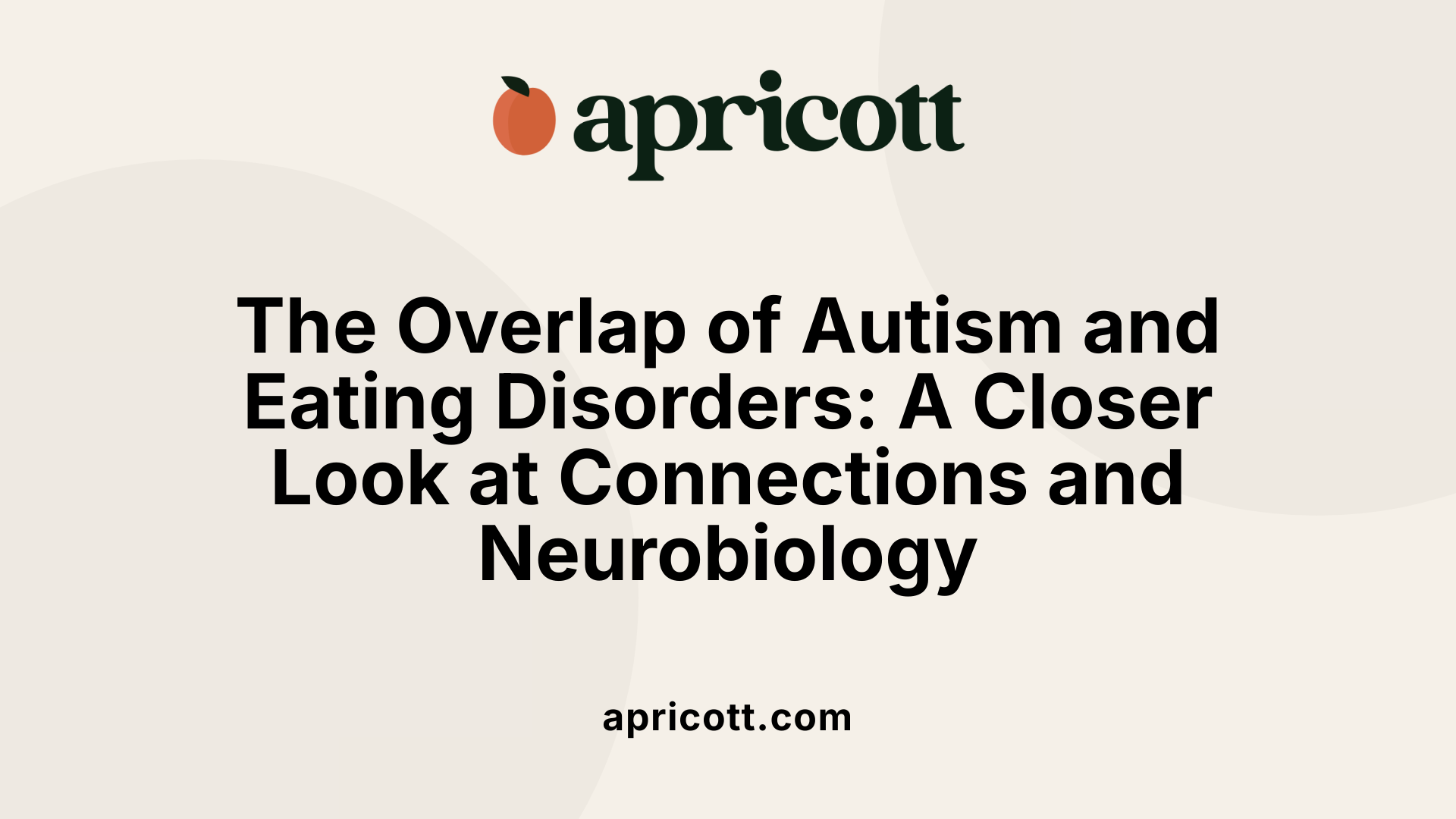 Research shows a significant overlap between autism spectrum disorder (ASD) and eating disorders, notably anorexia nervosa and avoidant/restrictive food intake disorder (ARFID). Studies estimate that about 20-35% of individuals with anorexia exhibit autistic traits or are diagnosed with autism, highlighting a strong connection.
Research shows a significant overlap between autism spectrum disorder (ASD) and eating disorders, notably anorexia nervosa and avoidant/restrictive food intake disorder (ARFID). Studies estimate that about 20-35% of individuals with anorexia exhibit autistic traits or are diagnosed with autism, highlighting a strong connection.
Autistic individuals often exhibit restrictive eating behaviors, sensory sensitivities, and rigid routines related to food. These traits can directly contribute to disordered eating patterns or worsen existing conditions. For example, sensory aversions to textures or temperatures may lead to food selectivity, while strict routines around meals provide comfort and predictability.
This overlap is complicated by neurobiological and genetic links. Shared factors include differences in sensory processing, emotional regulation, and brain structure. Many autistic people also experience difficulties with interoception—the ability to sense hunger or fullness—making eating behaviors more challenging.
When autism and eating disorders co-occur, treatment outcomes tend to be poorer if support is not specifically tailored. Standard treatments often overlook sensory needs or routines, making recovery more difficult. Therefore, early diagnosis and adaptations in care—such as neurodiversity-affirming approaches—are essential.
Understanding the relationship between autism and eating disorders allows for better targeted interventions, improving prognosis and well-being for those affected. Enhanced awareness and specialized support services are key to bridging these intersecting issues.
Clinical Features and Diagnostic Challenges of Eating Disorders in Autism
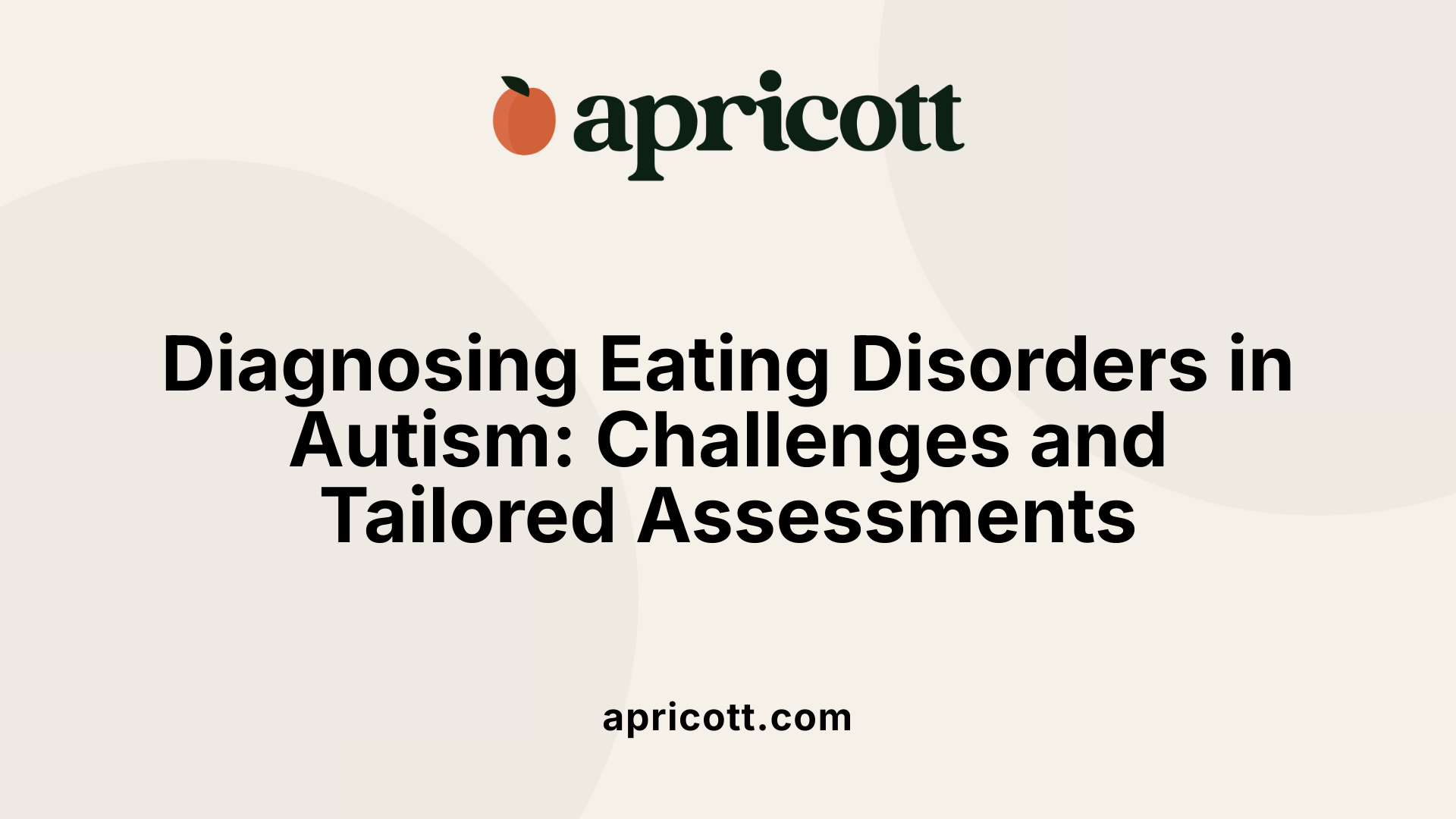
What are the symptoms, diagnostic criteria, and clinical features of eating disorders within the context of autism?
Eating disorders in autistic individuals often display a unique set of symptoms that overlap with core autism traits, which can complicate diagnosis. These disorders may include restrictive eating patterns, sensory sensitivities, and rigid routines around food and eating behaviors.
Common symptoms include extreme food selectivity, aversion to certain textures or smells, and ritualistic behaviors such as specific presentation or timing of meals. Autistic individuals might engage in obsessive calorie counting or enforce strict rules about what they eat, often driven by sensory preferences rather than concerns about weight or body image alone.
Clinically, these features may present as difficulty managing food routines, heightened food aversions, and resistance to change, which can resemble or coexist with conditions like ARFID (Avoidant/Restrictive Food Intake Disorder). This makes differential diagnosis challenging, especially since many autistic traits—such as social difficulties and cognitive rigidity—can mimic or mask eating disorder symptoms.
Diagnosis involves comprehensive assessments that incorporate clinical interviews and specialized tools sensitive to both autism and eating behaviors. Healthcare providers often utilize autism-specific diagnostic instruments alongside traditional eating disorder criteria, recognizing that behaviors like sensory processing issues and routine adherence are often integral aspects.
Treatment commonly requires tailored approaches, recognizing the importance of sensory sensitivities and communication challenges. Adapted therapies aim to improve eating habits while respecting the individual's neurodiversity, ultimately improving health outcomes for autistic patients with eating disorders.
Support and Treatment for Autistic Individuals with Eating Disorders
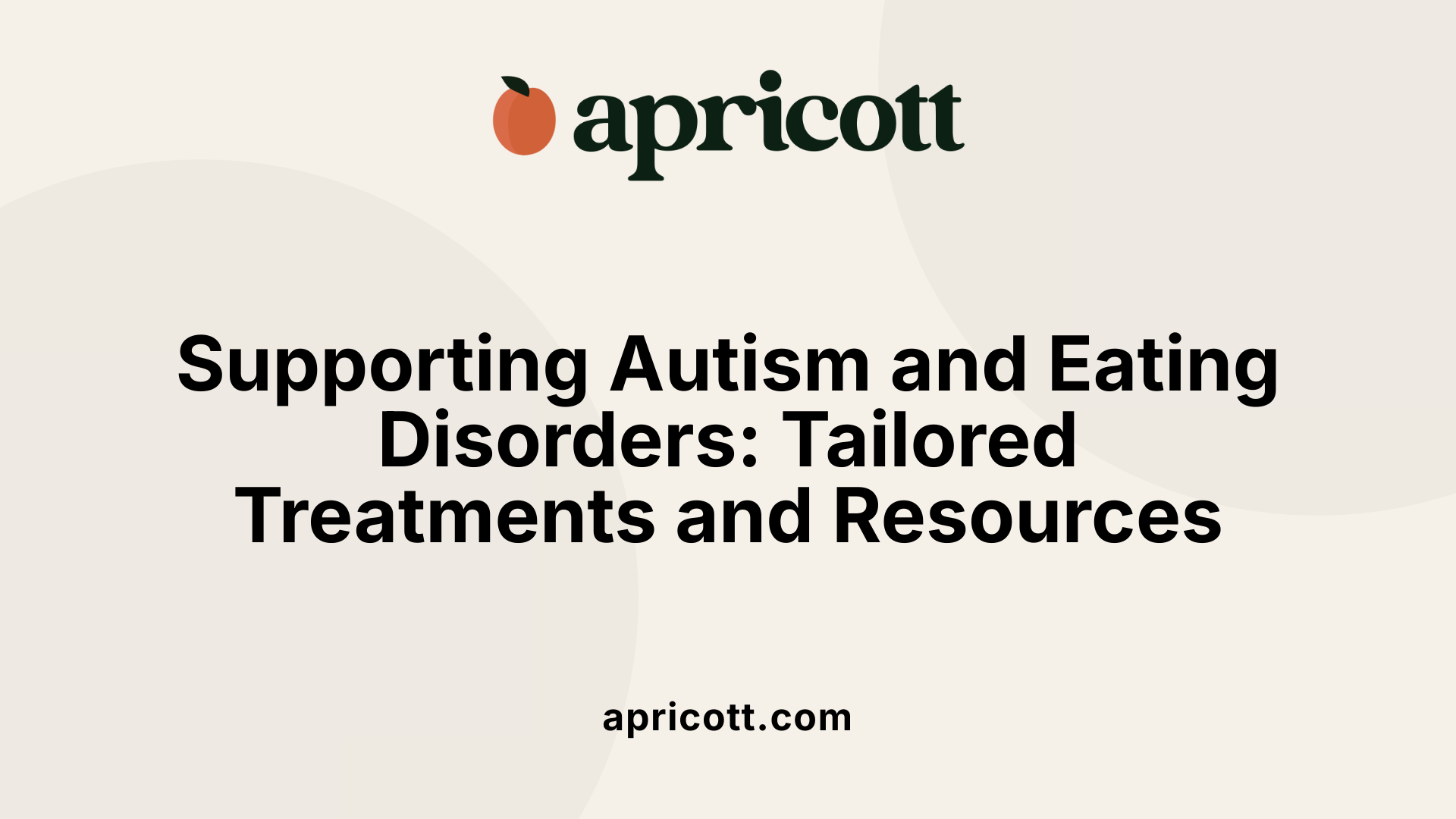
What treatment options and support resources are available for autistic individuals with eating disorders?
Managing eating disorders in people with autism requires specialized, tailored approaches. Treatment usually involves a combination of nutritional advice, psychological therapies, and behavioral interventions designed specifically for autism traits and sensory issues.
A multidisciplinary team often includes dietitians, therapists, and medical professionals, all working together to develop a personalized plan. This plan considers sensory sensitivities like particular food textures or tastes, strict routines, and communication preferences. Approaches grounded in trauma-informed care and flexibility are essential to effectively support autistic individuals.
Support resources such as hotlines from organizations like the National Eating Disorders Association (NEDA), ANAD, and SAMHSA are crucial. These helplines offer immediate emotional support, referrals, and information not only for individuals struggling with eating behaviors but also for caregivers seeking guidance.
While specific national guidelines for treating autism-related eating disorders are still developing, current evidence indicates that involving professionals trained in autism and eating disorder intersections significantly improves outcomes. Including autistic voices in treatment planning and staff training helps ensure that care is respectful, accessible, and effective. Early intervention and continuous, adapted support can enhance recovery chances and quality of life for autistic individuals facing eating disorders.
Differences in Manifestation and Challenges in Autistic Populations
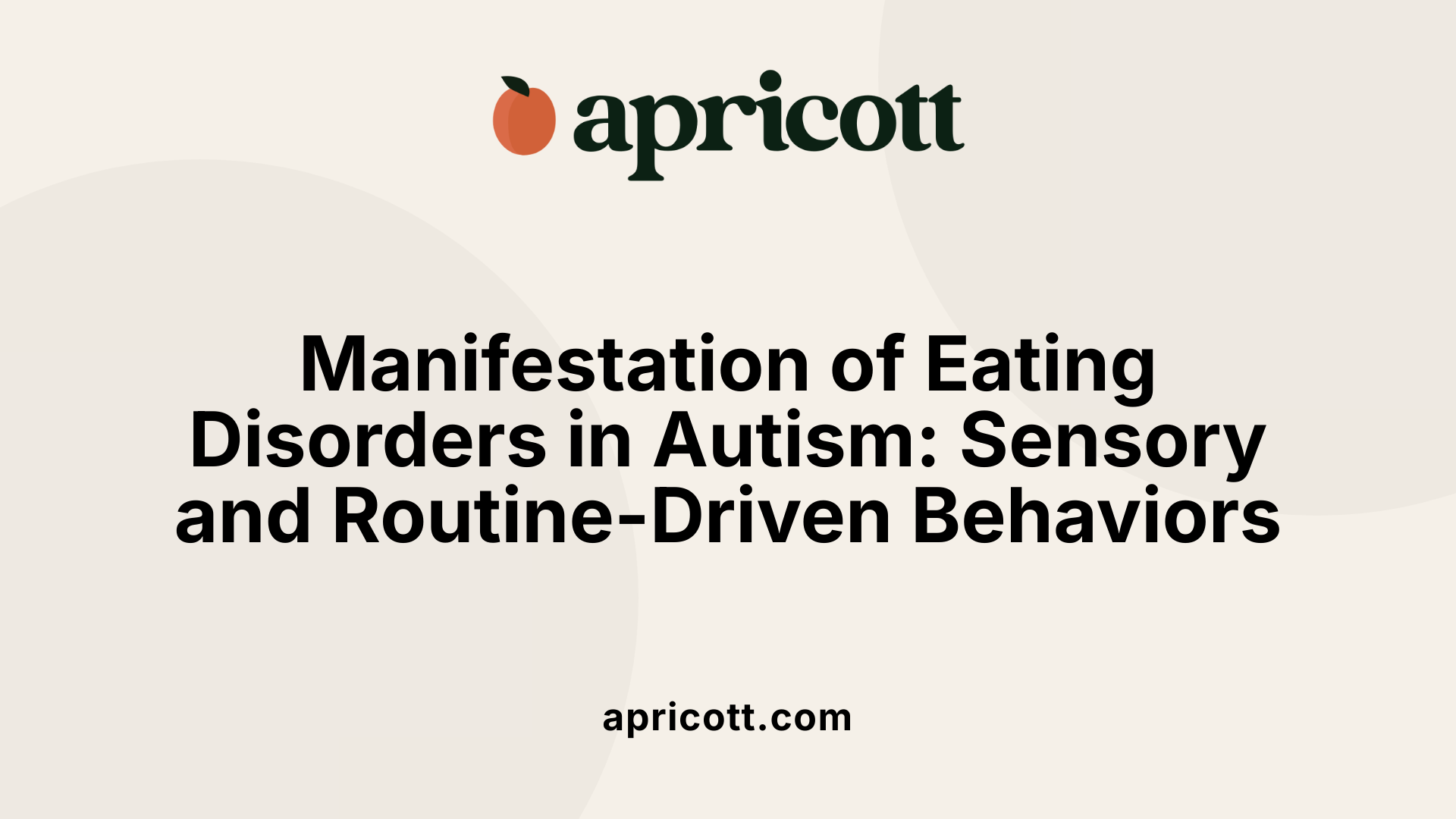
How do eating disorder symptoms and manifestations differ in autistic individuals compared to neurotypical individuals?
Autistic individuals often display unique eating disorder symptoms influenced by sensory sensitivities, habitual routines, and communication challenges. Unlike neurotypical individuals, who may primarily restrict food intake for weight control or body image reasons, autistic people frequently restrict food due to sensory aversions to textures, smells, or visual aspects of food. This can lead to conditions like Avoidant/Restrictive Food Intake Disorder (ARFID), characterized by limited food variety and nutritional intake not driven by concerns over body shape.
Furthermore, many autistic individuals develop obsessive behaviors such as calorie counting, rigid routines around mealtimes, and selective eating—behaviors rooted in a need for predictability and sensory comfort rather than traditional eating disorder motivations.
Autistic traits such as difficulty with emotional regulation, theory of mind deficits, and challenges in recognizing hunger and fullness cues also influence how eating problems manifest. These challenges can make it harder for them to express or understand their internal states related to appetite, leading to misdiagnosis or inadequate treatment.
When autism remains unrecognized, the severity of eating disorder symptoms and related health risks can increase. Treatment efforts that do not account for sensory sensitivities or neurodiversity often face poor engagement and limited success. Tailored, neurodiversity-affirming interventions that consider individual sensory profiles and cognitive needs are crucial for effective recovery.
Autistic individuals may experience more persistent and severe outcomes in eating disorder treatment, emphasizing the need for specialized approaches to improve engagement and health outcomes in this population.
Scientific Insights into Autism and Eating Disorders
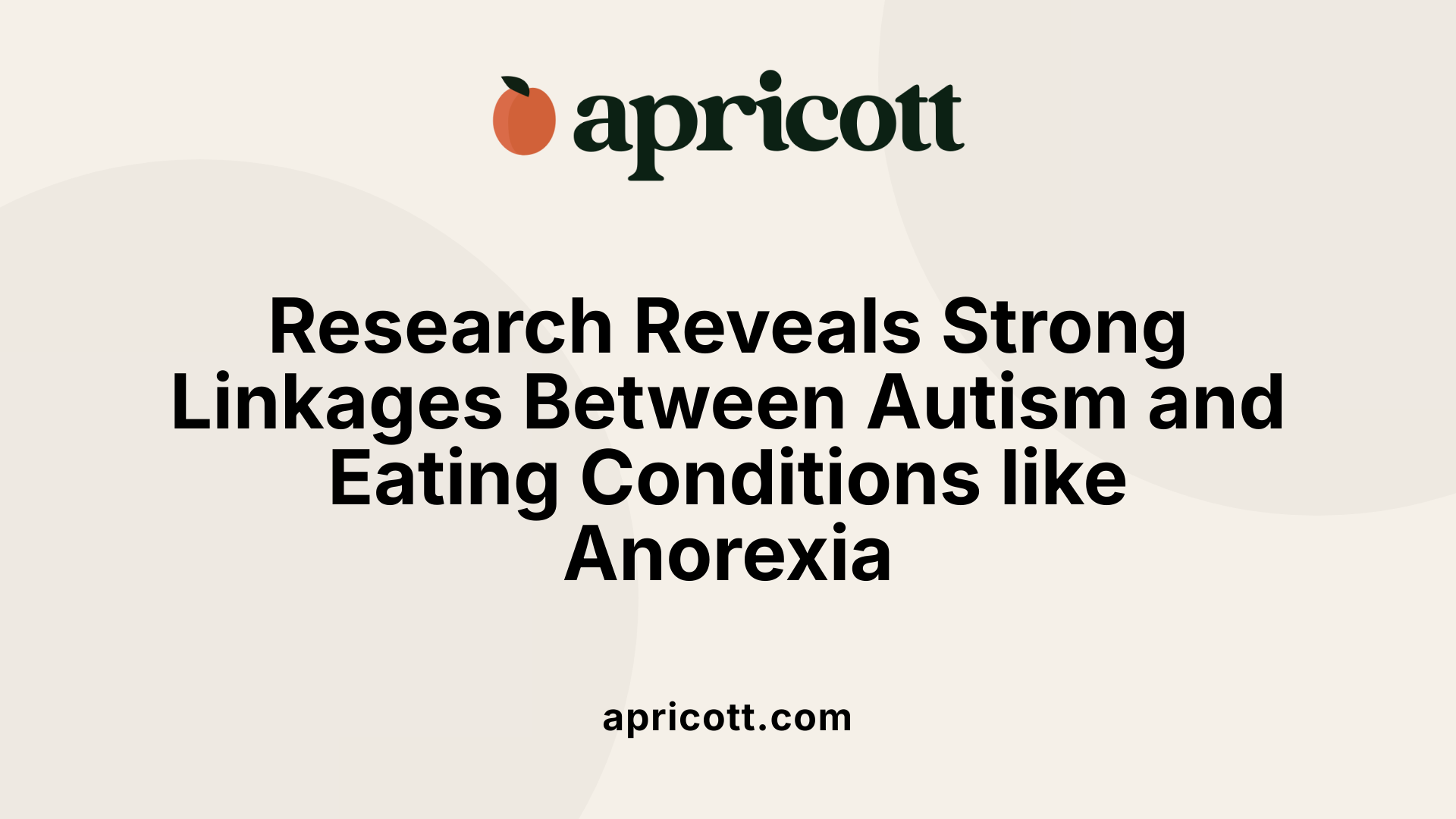
What do scientific studies reveal about the links between autism spectrum disorder and specific eating conditions like anorexia nervosa?
Research indicates a strong connection between autism spectrum disorder (ASD) and eating disorders, especially anorexia nervosa (AN). Up to 35% of women with AN display elevated autistic traits, and approximately 20-30% meet the criteria for autism, showing significant overlap. Studies also reveal that nearly 30% of individuals diagnosed with AN have autism or autistic-like features.
Autistic traits in people with anorexia tend to include sensory sensitivities, rigid behaviors, and social difficulties. These features can contribute to the severity of the disorder and create challenges for treatment. For example, difficulties with social cognition, such as mentalising or understanding others’ perspectives, and cognitive inflexibility are common among individuals with both conditions.
Clinically, those with co-occurring autism often experience more profound psychological symptoms, including social withdrawal and emotional regulation issues. This combination can lead to longer-lasting and more resistant forms of anorexia, with poorer mental health outcomes.
Underlying neurobiological and cognitive mechanisms, such as differences in brain structure related to social cognition and routines, drive this link. These shared mechanisms suggest that autism-related traits influence eating disorder behaviors, making comprehensive assessment crucial.
Recognizing and addressing autism features in patients with anorexia can support more tailored treatments that accommodate sensory needs and cognitive styles, ultimately improving recovery prospects and overall wellbeing.
Mechanisms and Causes of Autism-Eating Disorder Comorbidity
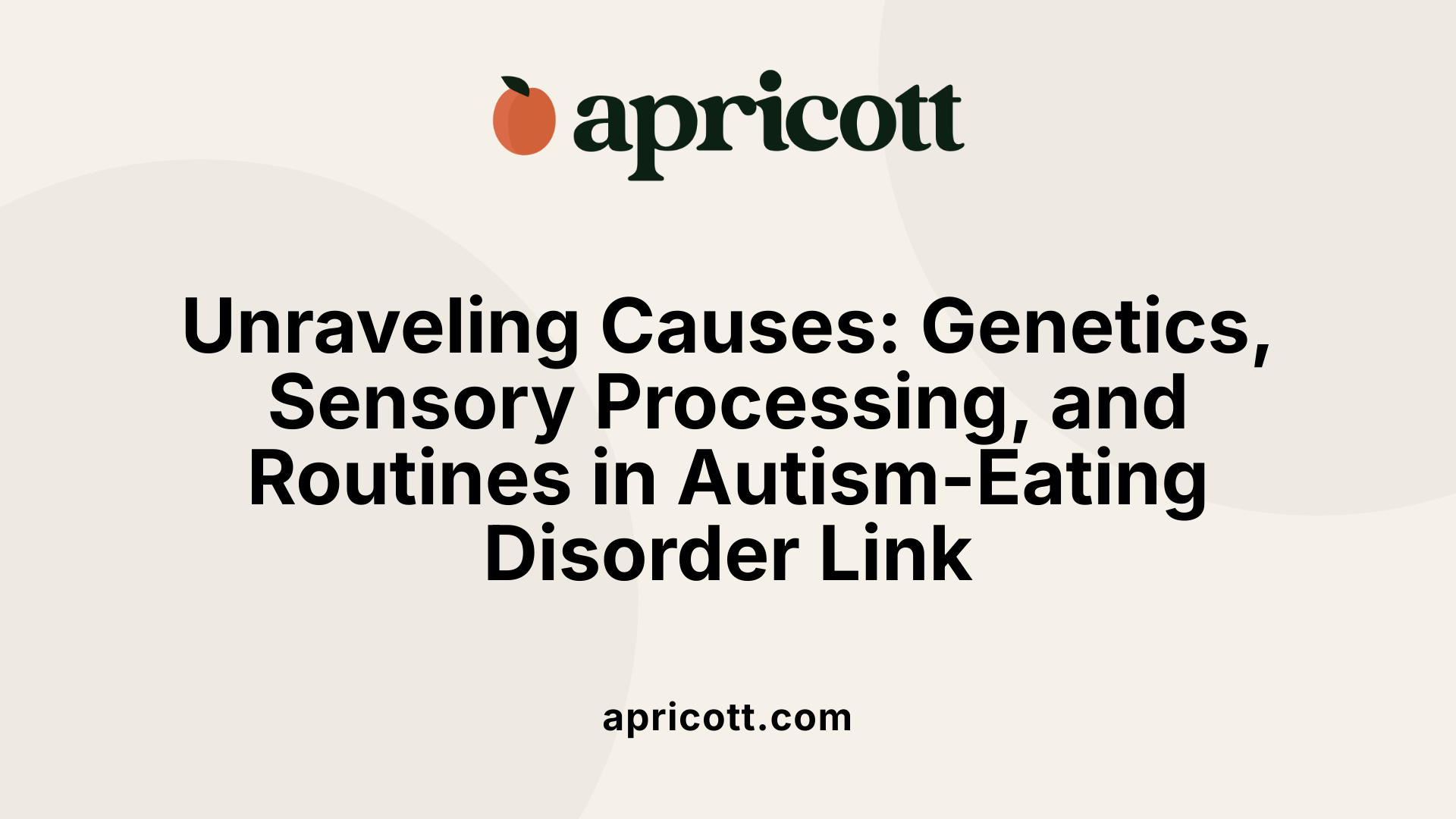
What are the causes and mechanisms underlying the comorbidity of autism and eating disorders, according to research?
Research suggests that the co-occurrence of autism and eating disorders stems from multiple intertwined factors, including genetic, neurobiological, and environmental influences. One prominent aspect involves sensory processing differences. Autistic individuals often experience heightened sensitivities to food textures, smells, and sounds, which can promote sensory aversion and selective eating habits.
Furthermore, traits like cognitive rigidity and strict routines are common in autism and can lead to rigid eating behaviors. These include resistance to trying new foods and obsessional behaviors around food intake, which are characteristic of conditions like anorexia and ARFID.
Emotional regulation challenges, such as difficulties in recognizing and managing feelings (alexithymia), also play a role. Without clear emotional awareness, individuals may use control over eating as a way to cope with stress or anxiety.
Neurobiological factors, including shared brain pathways and genetic predispositions, are under investigation. Family history and shared genetic markers may increase vulnerability to both autism and eating disorders.
Environmental and familial influences, such as social pressures and societal beauty standards, can compound these issues, especially as autistic individuals often seek control and familiarity amid external chaos.
Altogether, these mechanisms underline the importance of tailored interventions that consider the unique neurodevelopmental profile of autistic individuals. Addressing sensory sensitivities, routines, and emotional needs is critical for effective treatment and support.
| Factors | Description | Impact on Eating Behaviors |
|---|---|---|
| Sensory Processing | Heightened sensitivities to textures, tastes, and smells | Food selectivity, aversions, restrictive diets |
| Cognitive Rigidity | Strict routines and difficulty with change | Avoidance of diverse foods, obsessive behaviors |
| Emotional Regulation | Challenges in recognizing and expressing emotions | Use of food control as emotional regulation |
| Neurobiological Links | Shared genetic and brain pathway factors | Predisposition to comorbid conditions |
| Environmental Factors | Social norms, family dynamics, anxiety levels | Reinforcement of rigid eating patterns |
Understanding these interconnected mechanisms highlights the need for specialized, neurodiversity-affirming approaches that address sensory, cognitive, and emotional aspects unique to autistic individuals with eating disorders.
Towards Better Support and Understanding
The intersection of autism and eating disorders presents complex clinical, neurobiological, and behavioral challenges. Recognizing the unique characteristics, understanding shared mechanisms, and advocating for tailored, neurodiversity-sensitive interventions are crucial for effective treatment. Continued research and increased awareness among healthcare professionals and caregivers can improve outcomes and quality of life for those affected. Support organizations and hotlines play a vital role in providing immediate assistance and fostering accessible, respectful care environments, ultimately guiding autistic individuals toward recovery and well-being.
References
- Eating Disorder Hotlines for 24/7 Crisis Help
- Eating Disorders and Autism
- Will eating disorder program help with autism-related food ...
- Eating disorders
- Potential mechanisms underlying the association between ...
- Feeding and eating problems in children and adolescents ...
- Eating, eating disorders and autism | What is autism?
- Why So Many People with Autism Have Eating Disorders
.svg)
.svg)








